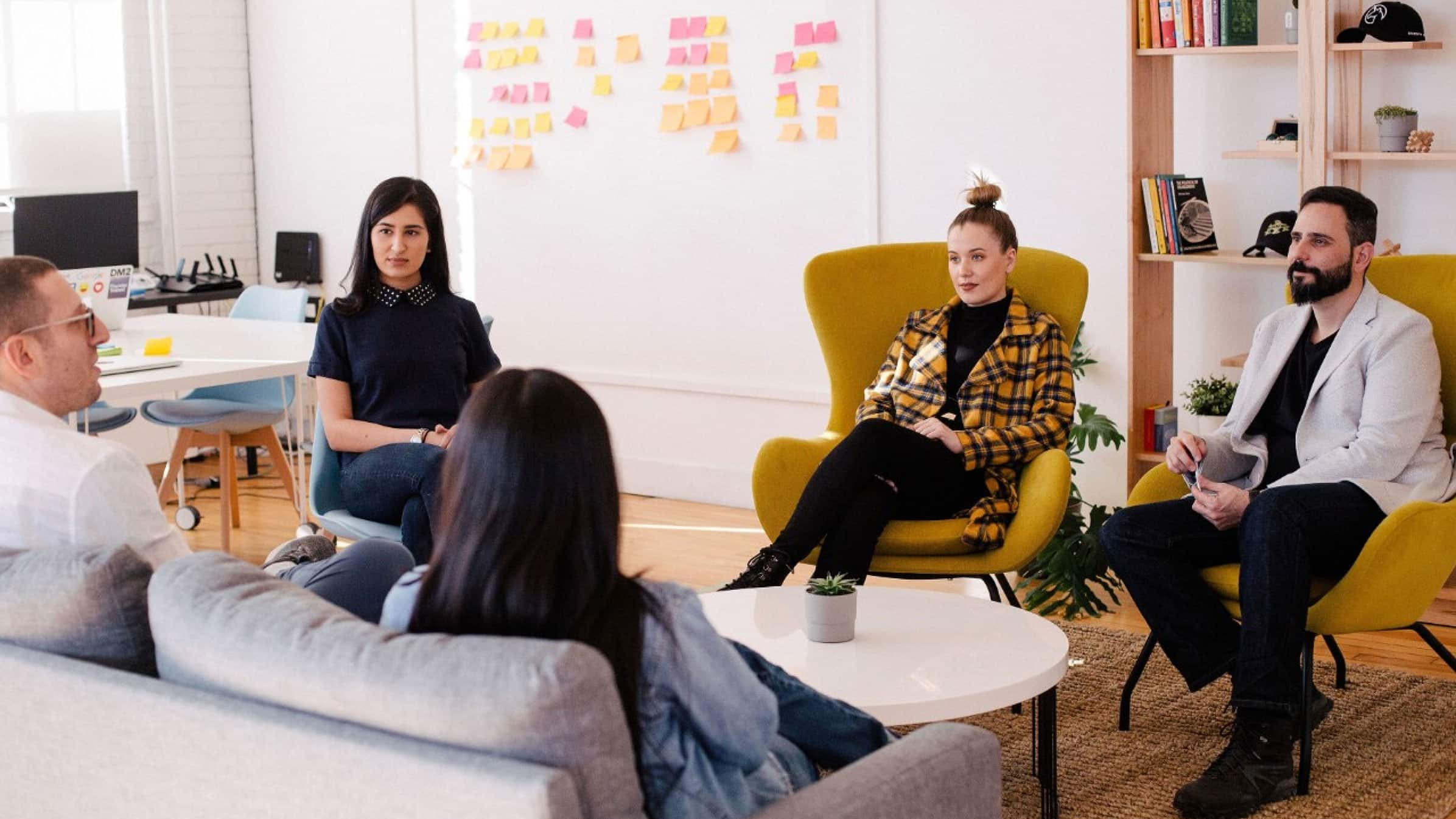Designers, stop flirting and commit to your product team
Why I had to join the product team to become a better designer

Joe Caminiti, Product Design Lead | 5 min read
In my time as a product designer at a software-as-a-service company, I’ve seen two clear sides in the pursuit for better design. There’s the argument that designers and researchers should act almost like an agency, collaborating with other teams but essentially returning to a design hub to work. In this model, designers potentially sacrifice speed of deployment for thorough processes and beautiful execution.
Then there’s the idea that designers should be embedded within product pods, focused on pushing product out the door but potentially sacrificing the creative energy and big ideas that emerge when designers are surrounded by other creatives. So the question is, should you flirt with product, or commit to a long-term relationship? I’ve seen how both relationship styles pan out, and I think I’ve worked out which I prefer. Let me explain.
For the purpose of this story, I’ll call product managers, product owners and developers ‘the product team’.
Working in a design hub
Landing a new job is always exciting. When I joined Xero almost two years ago, I was eager to work with an established design team who were bursting with talent and passionate about their work. There were so many opportunities, it was hard to know where to begin. I spent the first few weeks in a barrage of meetings, processes and workshops, shadowing my design manager as I settled into my new role.
I think it’s fair to say that in my first six months, I got a lot more out of my team than they got out of me. Spending time with world-class researchers helped me think about user-centred design in a much deeper way. But while Xero’s approach to product design was continually pushing me in the right direction, it was evident that working around designers and researchers alone was not going to be enough.
It wasn’t until my design manager pointed out the importance of cultivating relationships with the product team that I realized the problem. Despite Xero’s strong culture of collaboration and knowledge sharing, I was missing an opportunity to develop new skills and forge better partnerships with people outside the design team. To grow as a designer and deepen my knowledge of our product, I needed to embrace the ‘product’ part of my product design role.

Embracing the product pod
I began joining the product pod for their morning rituals, huddles and weekly catch-ups to discuss my proposed designs. Their energy was very different from my design colleagues, and I quickly discovered that my approach to solving design problems and the way I explained solutions was falling on deaf ears. It was like I was speaking a different language. I immersed myself deeper in the work, throwing out bigger and more creative ideas, to no avail.
With speed to market as a driving force, it often felt like the product team were looking for ways to deliver experiences in the smallest possible window of time. The excitement of my new job all but disappeared as I found myself in a tug of war over time: I wanted to spend more time investigating customer problems and they wanted to deploy quickly. After all, what was there to understand? They already knew what they had to build.
As I struggled to bring the team around to my way of thinking, I saw my designs pulled apart, with simpler versions pushed into production. My enjoyment for the work quickly declined and I began to question the product I was working on, the company I was working for and most importantly, my role as a product designer. Surely this wasn’t how my story was supposed to end, a bitter and frustrated designer void of all creative input?
Changing my mindset
As designers, we are always told to have empathy for the user. But what about empathy for other people in our team? So often we only think of them in terms of whether they’re on board with our ideas or not. What if I looked at my designs from the product team’s perspective? Would that ease the feeling of self-loathing I was experiencing and help me understand where I was going wrong?
I started approaching my work with a ‘product’ mentality and realized that for a team that likes structure and ideas grounded in data, the spontaneity and creativity that a designer brings to the table can make everyone a little nervous, which is fair enough. After all, the buck stops with the product manager. They’re the ones who need to navigate the tricky balance between business goals and customer needs.
Committing to the product team
Since then, I’ve begun to enjoy my work so much more. The team hasn’t changed and the work is the same, but the way I approach my projects is very different. I know those crazy big ideas probably won’t get off the ground, so I adapt them in a way that gives users the best possible experience and fits into the build time that we have available. I explain my ideas in a way that gives the team a deep understanding of the solution, and why I believe it’s right.
I’ve also embraced an open-door policy, where I’ve made it a priority to listen to and value the ideas that come from product managers, product owners, developers and other people in the pod. Those ideas are often some of the best ways to approach user problems and can help shape my design solution. We always find gold in the time we spend working on solutions together.
My product team has responded positively to this new approach and I’m finding that my ideas are better received. Understanding the ‘other side’ and being closer to decision makers has given me a greater opportunity to influence the end product. But I’ve learnt that you can’t have that impact unless you commit to the team and the people who bring your ideas to life. Once you commit to the idea of forming better working relationships with the product team, alignment can form.
This brings me to the most important point in my story. You aren’t a part of a design team, who moonlights a few hours a week in the product team. We are product designers, and we are a part of a product team. Your product team will never trust you if you don’t commit to them. Once you have that trust, you will form friendships that enable safe, open dialogue. You’ll be able to critique ideas and challenge one another with respect. And that’s where the magic happens.

Designing in the real world
The time I’ve spent with the product team has made me a better, more well-rounded designer. I’ve learned not to get sidetracked about what the product ‘could’ be. Instead, I design with real-world constraints in mind and focus on what we can improve for our users now. These constraints help me think outside the box and forces a different type of creativity, which it turns out is the skill I never knew I needed.
Working closer with developers has also taught me to be more precise. With methodical thinking, I’m getting better at making the right decisions, which comes from asking better questions.
While we are far from the perfect team, my mindset change means I now listen to debates and varying points of view with a different lens. I’ve made peace with the fact that there are some decisions I cannot influence, and enjoy bringing my ideas and focus to the product we’re building for our users. Because after all the debates and iterations, they’re the people we’re working for.
So while I may enjoy spending time with my designer colleagues, it turns out I had to commit to the product team to become a better designer.